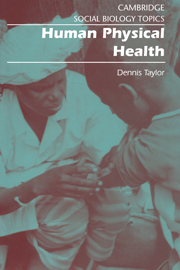Summary
The concept of physical fitness
Most of us will have our own preconceived ideas about what is meant by physical fitness. Here are some definitions taken from various sources.
Physical fitness is:
‘… a person's ability to utilise the machinery of their body in sports and exercise.’
‘… the ability of your whole body, including the muscles, skeleton, heart and all other body parts, to work together efficiently, which means being able to do the most work with the least amount of effort.’
‘… the ability to carry out daily tasks with vigour and alertness, without undue fatigue, and with ample energy remaining to enjoy leisure-time pursuits and to meet unusual situations and unforeseen emergencies.’
‘… the capacity to meet successfully the present and potential physical challenges of life.’
From a biologist's point of view, the reference to machinery in the first definition is useful. Just as we need to be aware of how a machine works in order to keep it running smoothly and efficiently, so we need to be aware of the needs of our own bodies. The important difference between a non-living and a living machine is that the latter is self-renewing and responds to use by maintaining or even improving itself. In other words, it becomes physically fit. Conversely, if it is not used, or if it is abused, it will decline in performance, that is, become unfit.
- Type
- Chapter
- Information
- Human Physical Health , pp. 107 - 125Publisher: Cambridge University PressPrint publication year: 1989

